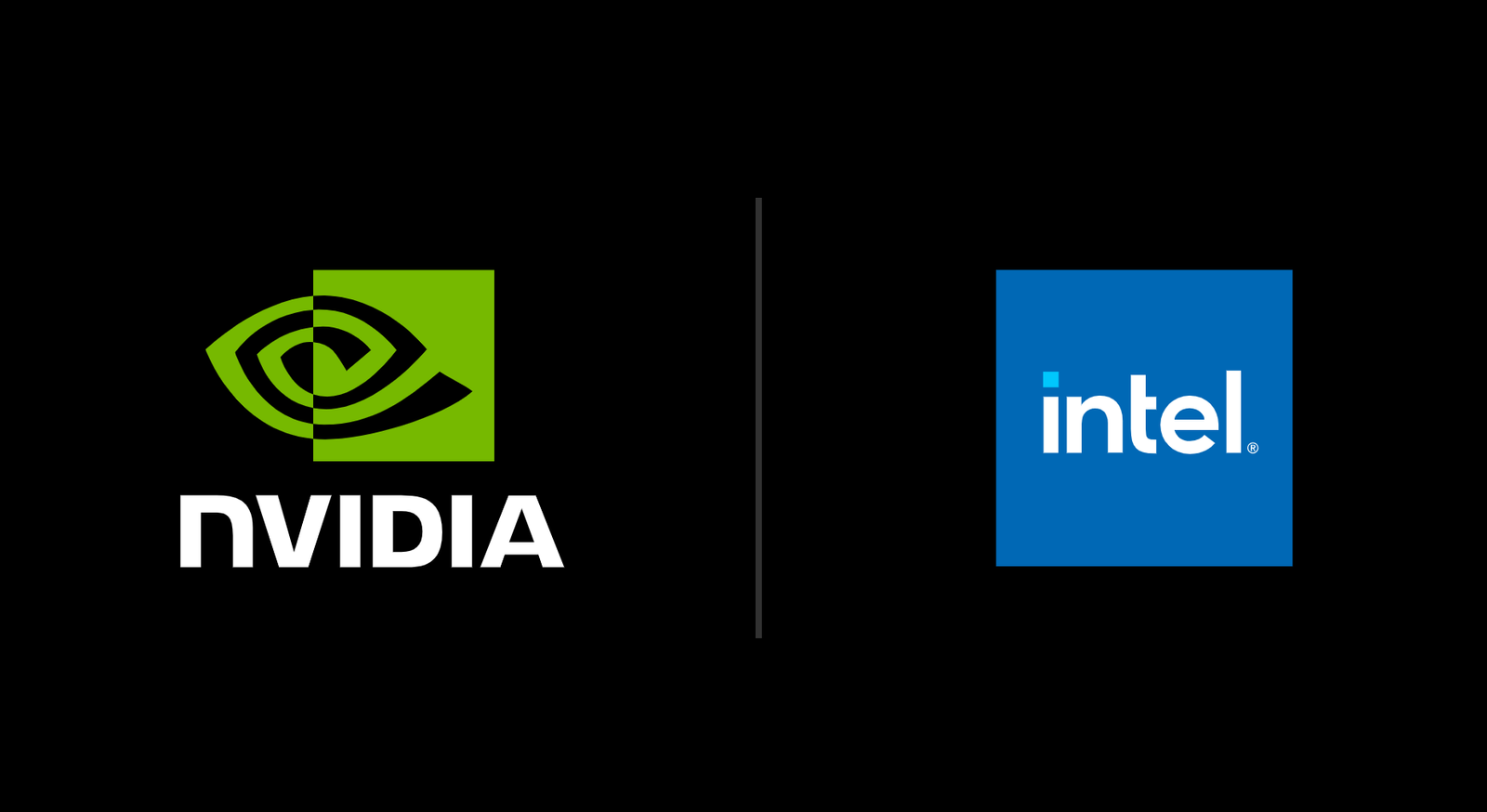The AI world is moving fast, and September 2025 brought one of the most unexpected partnerships yet: NVIDIA and Intel teaming up to build AI infrastructure and new AI-powered system-on-chips (SoCs).
Once fierce rivals in the semiconductor industry, these two giants are now collaborating to push the boundaries of AI computing. The move signals a major shift in how AI workloads, from massive data centers to personal devices, will be powered in the years ahead.
What’s Behind the NVIDIA + Intel Partnership?
For decades, Intel dominated CPUs while NVIDIA ruled GPUs. But the rise of AI blurred the lines: modern AI models need both compute architectures working in harmony.
This collaboration focuses on:
- Developing custom AI SoCs – integrating Intel’s CPU expertise with NVIDIA’s GPU and AI acceleration technologies.
- Building AI infrastructure solutions – optimized systems for cloud providers, enterprises, and edge devices.
- Expanding AI to personal computing – bringing generative AI performance to laptops, desktops, and edge hardware.
The alliance isn’t about merging products but creating co-designed platforms where Intel handles the x86 CPU side and NVIDIA powers the GPU/AI acceleration side.
Key Features of the Collaboration
- Hybrid AI SoCs
- Chips designed with Intel CPUs with NVIDIA AI accelerators on a single SoC.
- Optimized for both training large models and running inference efficiently.
- Chips designed with Intel CPUs with NVIDIA AI accelerators on a single SoC.
- Next-Gen Data Center Solutions
- Joint reference designs for hyperscalers and enterprise clients.
- Targeting lower latency, higher throughput, and reduced energy costs.
- Joint reference designs for hyperscalers and enterprise clients.
- AI-Optimized Personal Computers
- Intel’s Meteor Lake and Lunar Lake architectures paired with NVIDIA RTX AI acceleration.
- Consumer laptops capable of running advanced generative AI locally.
- Intel’s Meteor Lake and Lunar Lake architectures paired with NVIDIA RTX AI acceleration.
- Unified Software Stack
- Support for NVIDIA CUDA, Intel oneAPI, and cross-platform AI frameworks.
- Developers can write once, deploy everywhere.
- Support for NVIDIA CUDA, Intel oneAPI, and cross-platform AI frameworks.
How Does This Compare to Other Industry Moves?
The NVIDIA–Intel alliance comes at a time when every chipmaker is racing to own AI compute:
- AMD: Advancing Instinct GPUs and AI-focused Ryzen chips.
- Apple: Building M-series SoCs with neural engines for AI workloads.
- Qualcomm: Pushing Snapdragon X Elite for AI-powered PCs.
- Google: Relying on TPUs for cloud AI acceleration.
Unlike these competitors, NVIDIA and Intel are combining forces rather than competing head-to-head. The message is clear: synergy beats siloed innovation when it comes to scaling AI.
Why This Collaboration Matters
- For Data Centers
- Hyperscalers (AWS, Azure, Google Cloud) gain access to co-engineered hardware that’s more power-efficient and cost-effective.
- AI training clusters could shrink energy use, lowering both costs and carbon footprint.
- Hyperscalers (AWS, Azure, Google Cloud) gain access to co-engineered hardware that’s more power-efficient and cost-effective.
- For Businesses
- Enterprise clients get optimized AI infrastructure for analytics, automation, and generative AI apps.
- Reduced reliance on importing multiple vendor solutions.
- Enterprise clients get optimized AI infrastructure for analytics, automation, and generative AI apps.
- For Consumers
- Local AI: PCs and laptops will be able to run powerful AI models offline, enabling faster response times and stronger privacy.
- Creators, gamers, and knowledge workers will see smoother AI-assisted workflows.
- Local AI: PCs and laptops will be able to run powerful AI models offline, enabling faster response times and stronger privacy.
- For the Global AI Race
- Strengthens U.S. semiconductor dominance in the face of competition from Chinese AI chipmakers.
- Strengthens U.S. semiconductor dominance in the face of competition from Chinese AI chipmakers.
Potential Use Cases
- Generative AI for Creators
- Video editing, music composition, and 3D rendering powered by local AI on hybrid SoCs.
- Video editing, music composition, and 3D rendering powered by local AI on hybrid SoCs.
- AI-Enhanced Gaming
- NVIDIA’s DLSS combined with Intel cores for ultra-realistic visuals and AI NPCs.
- NVIDIA’s DLSS combined with Intel cores for ultra-realistic visuals and AI NPCs.
- Enterprise AI Workflows
- Co-designed infrastructure running ERP, supply chain, and financial models more efficiently.
- Co-designed infrastructure running ERP, supply chain, and financial models more efficiently.
- Edge AI
- Smart factories, autonomous vehicles, and robotics powered by low-latency hybrid chips.
- Smart factories, autonomous vehicles, and robotics powered by low-latency hybrid chips.
Challenges & Risks
Even with the excitement, hurdles remain:
- Integration Complexity: Combining Intel’s CPU and NVIDIA’s GPU on the same SoC requires deep engineering alignment.
- Market Cannibalization: OEMs may worry about overlapping products with existing NVIDIA and Intel chips.
- Competition from ARM & RISC-V: Lightweight architectures are gaining traction for AI at the edge.
- Supply Chain Constraints: Global chip shortages and export restrictions could slow adoption.
The Bigger Picture
This collaboration isn’t just about chips, it’s about defining the next decade of AI computing.
- For Intel, it’s a chance to regain relevance in an AI-first world.
- For NVIDIA, it’s a way to extend its GPU dominance into hybrid SoCs and consumer hardware.
- For the industry, it could standardize how CPUs and GPUs co-exist for AI, creating a new baseline for performance and efficiency.
The NVIDIA and Intel partnership shows that the AI revolution is too big for any one company to handle alone. By joining forces, these two giants are betting on a future where AI is seamlessly integrated into every layer of computing, from cloud to laptop to edge devices.
If successful, their hybrid AI SoCs and co-engineered infrastructure could set a new global standard, pushing competitors to rethink their strategies.
In many ways, September 2025 might be remembered as the month when rivals became allies to power the AI-driven future.
















